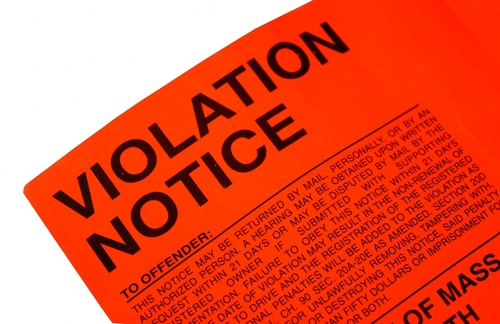Yesterday, we reviewed some recent OSHA enforcement cases that resulted in multiple citations and six-figure penalties. Today, we wind up with some additional reports on the cost of failing to comply with OSHA standards.
 |
Workers Exposed to Anhydrous Ammonia
OSHA inspected a Region 7 food storage facility under its national emphasis program for process safety management and cited the company with 14 safety violations, four of them willful. Among the violations: failure to implement written safe operating procedures and measures to take in response to anhydrous ammonia exposures. The employer was fined $132,800 and placed in OSHA’s Severe Violator Enforcement Program (SVP).
Employee Complaint Leads to 21 Serious Violations
A worker’s complaint led to an inspection of a New Hampshire textile manufacturing facility, where OSHA inspectors uncovered numerous hazards leading to 21 citations for serious violations. According to OSHA, among other safety problems workers were not protected from arc flash, fall protection equipment was not provided, confined space hazards were not properly identified, machines were not properly guarded, and lockout/tagout procedures were not followed. The employer was fined $115,000.
Great news! BLR’s renowned Safety.BLR.com® website now has even more time-saving features. Take our no-cost site tour! Or better yet, try it at no cost or obligation for a full 2 weeks.
Fatality Leads to SVEP Placement and Fine
A worker at a shingle manufacturing plant in Wisconsin was fatally injured while servicing machinery that had not been locked out to prevent accidental start-up. The resulting OSHA inspection led to two willful violations related to lockout/tagout as well as five other serious violations covering other workplace hazards. The employer was fined $156,240 and placed in SVEP.
Workers Exposed to Amputation Hazards
An OSHA inspection of an Ohio manufacturer was initiated under the agency’s national emphasis program for amputations. The inspection uncovered numerous hazards that led to 16 violations of OSHA standards. OSHA’s area director in Toledo said, “Our inspection found that employees were exposed to injury and amputation risk in the facility because of insufficient guarding at the point of operation for various machines.… Amputation hazards of one of the leading causes of injury in manufacturing.” The employer was fined $147,600.
Forklift Accident Kills Two
After a worker and self-employed truck driver were struck and killed by a forklift at a Texas plastic manufacturing facility, OSHA conducted an investigation of the facility and cited the two companies operating there with 16 serious safety violations. Among other violations, OSHA inspectors found that the employers violated forklift training requirements. A penalty of $97,200 was imposed.
Your one-stop safety management resource, available 24/7. Go here to take a no-cost site tour or here to try it in your own office!
OSHA Inspector Could Look at Safety Incentive Programs, Too
The Occupational Safety and Health Administration (OSHA) is very concerned that safety incentive and award programs encourage the under-reporting of injuries and illnesses. Consider that:
- In 2012, OSHA Deputy Assistant Secretary Richard Fairfax issued a memo directing inspectors to scrutinize safety incentive programs.
- OSHA continues to be engaged in ongoing communication that questions safety incentive programs.
- A 2012 Government Accountability Office (GAO) study focuses on improving incentive/disincentive policy and guidance to inspectors.
Even though many companies have been using incentive programs successfully—many for quite some time—to reduce accidents and injuries, OSHA has taken the position that there are inherent flaws in these programs and has even directed inspectors to look closely at incentive programs where questionable activities are suspected.
Yet, when structured properly, incentive programs can play a very positive role in a safety program. The real question is how can you structure your program to achieve success while avoiding suspicions by OSHA inspectors that your program may not be above board?

Looking at all the incidents and the OSHA’s follow-up investigations show that OSHA needs to re-focus on prevention and not citation writing. It appears that OSHA sometimes is just looking to write citations as apposed to helping companies with their problems.
Obviously fines are needed for the bad apples but proactive prevention programs do help.